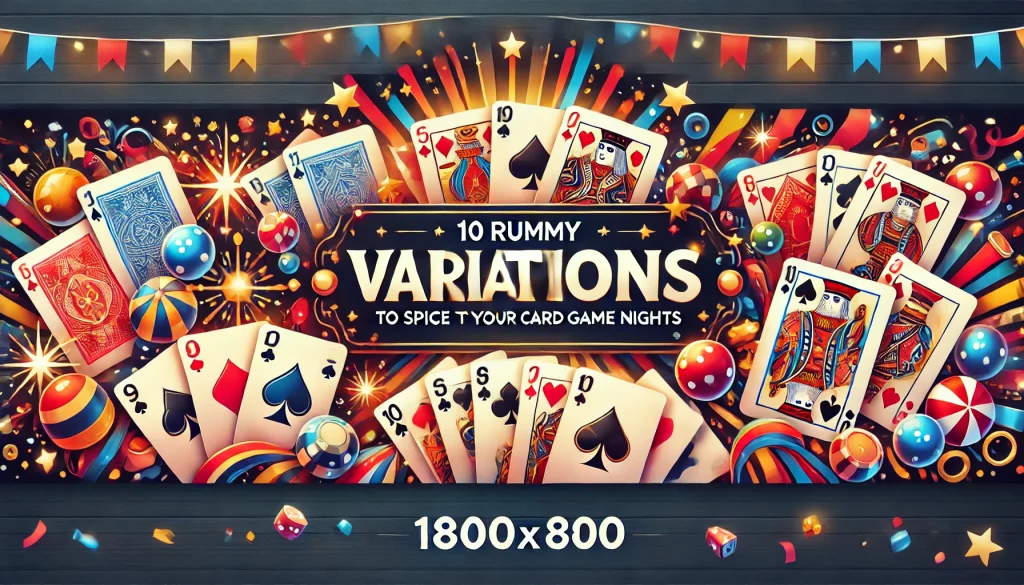Description

Over the centuries, the rummy culture popular card game rummy has developed into a variety of variants that suit a wide range of tastes and playing styles. Since its inception in the early 1800s, the game has crossed cultural boundaries and grown to be a popular past time in many nations. The fundamental Classic 777 Slots APK goal of rummy is still the same: players want to create winning hands by forming runs & sets of cards.
Rummy is a flexible & interesting game, 777 slots though, because the rules, scoring schemes, and gameplay elements can differ greatly between versions. Rummy’s versatility is what makes it so appealing. The game can be customized to fit the tastes of the players, whether it is played in friendly competition or in competitive settings.
While some variations add elements of chance and unpredictability, others place more emphasis on skill and strategy. In addition to keeping the game interesting, this diversity enables players to experiment with various strategies and tactics. The basic rules of rummy will be covered in this article, along with ten fascinating variations and special games like Gin Rummy, Indian Rummy, Contract Rummy, and Kalooki Rummy. Essentials of Gameplay. Depending on the variation being played, the number of cards dealt to each player at the start of the game usually ranges from seven to ten.
One card is positioned face-up to begin the discard pile, and the other cards form a draw pile. With the goal of creating melds to strengthen their hands, players alternately draw cards from the draw or discard piles. A player must discard one card after drawing in order to keep their hand full of cards.
taking the round. Until one player successfully melds all of their cards into valid melds and discards their final card, the round is terminated. Different versions may have fixed point values for particular melds, while others may award points based on the cards that remain in opponents’ hands. Learning how to play rummy.
To enjoy any rummy variation, you must comprehend the fundamental rules. In addition to the subtleties of drawing from either pile, players need to understand how to form melds and the significance of strategic discarding. Also, a lot of variants add special guidelines pertaining to jokers, wild cards, or particular scoring schemes that can greatly affect gameplay. Players’ experiences exploring the varied world of rummy will be improved by familiarity with these fundamental components.
Numerous variations of rummy exist, each offering a distinctive take on the traditional gameplay. Players may try these ten fascinating rummy variations: 1. In the skill-and strategy-focused two-player variation of rummy, known as “Gin Rummy,” players try to create melds while reducing the amount of deadwood, or unmatched cards that remain in their hands. 2. **Indian Rummy**: Usually played with two decks of cards, this variation is very popular in India. Players must form at least two sequences, one of which must be a pure sequence devoid of wild cards. 3. **Contract Rummy**: A multi-round game in which players must meet increasingly difficult meld requirements for every round. Fourth.
A popular variation among experienced players, **Kalooki Rummy** permits more intricate melds and frequently features wild cards. Fifth. The first player to go out determines the target score for subsequent rounds based on their final meld in **Oklahoma Rummy**, a variation on traditional rummy. 6. **Pinochle Rummy**: This variant challenges players’ strategic thinking by combining aspects of Pinochle & rummy with novel melds & scoring schemes. Seven. **Canasta**: A well-liked variation that entails creating “canastas,” or melds of seven cards, with particular scoring and wild card guidelines. 8.
A multi-round game that frequently results in fierce competition, Shanghai Rummy requires players to fulfill various meld requirements in each round. 9. Players in the **Rummy 500** variant can lay down several melds in a single turn, & points are awarded according to the value of the cards played. 10. Players can lay down their melds at any point during their turn in this unusual variation of rummy rummy, which adds a strategic element and element of surprise. Every one of these variants adds a unique flavor to the rummy experience, enabling players to select according to their inclinations for social interaction, strategy, or complexity.
Perhaps one of the most popular rummy variations is Gin Rummy, which is especially well-liked due to its two-player structure that promotes psychological strategies and strategic play. Ten cards are dealt to each player at the start of the game from a standard 52-card deck. One face-up card starts the discard pile, while the other cards form a draw pile. With the aim of creating melds while reducing deadwood—unmatched cards that are still in hand at the end of a round—players alternately draw cards. Gin Rummy is known for its emphasis on knocking, a technique that lets players stop a round when they think they have made enough melds.
If a player has 10 points or less in deadwood, they are allowed to knock. Both players reveal their hands after the knock, and any cards that don’t match are deducted from their score according to their face value (face cards are worth ten points). The knocker scores points according to the difference between their opponent’s deadwood and their own; if the opponent’s deadwood is equal or less, they win with an “undercut,” earning bonus points. The combination of offensive and defensive play in Gin Rummy gives it strategic depth.
Players need to be aware of what their opponents are gathering and discarding in addition to concentrating on creating their own melds. This dynamic makes for an interesting psychological struggle as players try to outmaneuver one another while skillfully controlling their own hands. In India and among rummy fans around the world, Indian Rummy is a lively variant that has become extremely popular. In order to add an exciting layer of complexity to gameplay, this version usually uses two decks of cards in addition to jokers as wild cards.
Each player is dealt thirteen cards, and they have to form at least two sequences, one of which needs to be pure (that is, devoid of any wild cards). Before your opponents do, you must combine every card into a valid combination. Like other rummy variations, players start the game by drawing from either the draw pile or the discard pile.
However, players must consider their moves strategically due to the unique rules that Indian Rummy introduces regarding sets and sequences. Players must prioritize creating valid combinations while monitoring their opponents’ moves, which makes the rule more difficult. For example, a player cannot declare their hand unless they have at least one pure sequence. Depending on the house rules, scoring in Indian Rummy can vary, but it usually entails giving point values to any unmatched cards that are still in hand at the conclusion of a round. While numbered cards retain their face value, face cards are worth ten points each.
The game keeps going until either a player hits a certain score threshold or a set number of rounds are finished. Indian Rummy is a popular game among both casual players & competitive players due to its strategic approach, deft card management, and social interaction. Players face an ever-changing challenge in Contract Rummy, an entertaining multi-round variation that adds unique melding requirements for every round. In Contract Rummy, which is usually played with two decks of cards and jokers as wild cards, players must complete predefined contracts for each round in order to exit.
These contracts might call for creating particular sets or sequences according to different standards that vary from one round to the next. There are typically multiple rounds in the game, usually seven, and each has specific contract requirements. Players might have to form two sets and one run in one round, for instance, & three runs without any sets in another. This dynamic keeps players alert as they modify their tactics in response to the terms of the current contract and take into account the goals of their rivals. As in traditional rummy, players alternately draw and discard cards; however, they are unable to lay down any melds until they have fulfilled the contract requirements for that round.
This heightens the tension as players strive to fulfill their contracts and obstruct their opponents’ advancement. The unmatched cards that remain in hand at the conclusion of each round are usually used to determine scoring, and noncompliance with contract requirements carries heavier penalties. For groups seeking a dynamic card game experience, Contract Rummy is an exciting option because it combines strategic planning with flexibility. A well-liked variation, Kalooki Rummy is renowned for its strategic depth & complex melding possibilities. Compared to many other rummy variations, Kalooki allows for more intricate combinations and is frequently played with two decks of cards plus jokers as wild cards.
In order to minimize deadwood, or unmatched cards left at the end of a round, players try to form sets and runs while also efficiently managing their hands. Players in Kalooki Rummy are dealt 13 cards each, and they alternate between drawing from the discard pile and the draw pile. This variation’s versatility with regard to melds is noteworthy; players can strategically use wild cards to form multiple sets or runs in order to finish their combinations. As players choose whether to use wild cards now or save them for possible future plays, this creates a variety of tactical options. Until a player successfully lays down every meld & discards their final card, the game is over.
At the conclusion of each round, competitors’ unmatched cards are used to determine points; face cards are worth ten points each, while numbered cards keep their face value. Kalooki Rummy is an interesting option for both informal get-togethers & competitive play because of its strategic decision-making and versatility. It can be fun to organize a rummy game night to get family and friends together for a fun-filled evening of friendly competition and laughter.
Set up a cozy area with lots of seating and good lighting for card games to guarantee a successful gathering. Having more than one deck on hand can help accommodate larger gatherings or enable the simultaneous play of several variations. Before beginning gameplay, take the time to thoroughly explain the fundamental rules of rummy variations such as Indian or Gin Rummy to new players. Think about beginning with easier versions before moving on to more difficult ones, such as Contract Rummy or Kalooki Rummy; this methodical approach keeps everyone interested while fostering participant confidence.
Also, offering drinks & snacks can improve the whole experience because they maintain energy levels without interfering with gameplay. Encourage lighthearted banter during games, but set ground rules for table talk as well to keep the conversation focused on strategy and avoid giving away too much about hands. In the end, creating a friendly environment will make your rummy game night special for everyone, whether it’s through competitive play or spontaneous card draws that make everyone laugh!lottery sambad old

